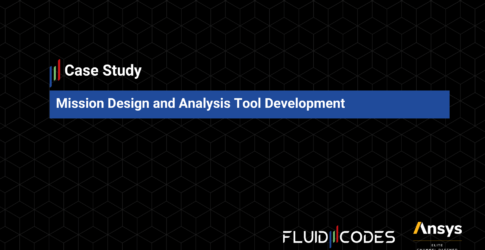Medical Simulation
With patient welfare hanging in the balance, disruptive innovation is a permanent concern and product failure is not an option in healthcare. Applying engineering simulation throughout development can make all the difference in bringing new treatments to patients while meeting safety standards and product deadlines.
When you build reliability into the design process, it improves compliance with tightening
FDA regulations — and saves lives. Since clinical testing can’t address every possible situation, medical device companies adopt engineering simulation (in silico testing) to systematically identify and resolve worst-case scenarios.
Cardiovascular
Implantable cardiovascular devices — stents, coils, heart valves and pacemakers — are complex as a result of exacting product and regulatory (FDA) specifications. The study of hemodynamics is critical to cardiac device engineering, which can benefit greatly from engineering simulation and advanced fluid–structure interaction modeling.
With more than 30 percent of all deaths due to cardiovascular or cardiac problems, the healthcare industry invests massively to prevent diseases, treat patients and minimize recovery. But innovative implantable cardiovascular devices — stents, valves or pacemakers — are slow to reach the patients because of extensive (pre)-clinical testing and necessary compliance with the regulatory authorities.
Understanding the behavior of a new device is critical to cardiac device engineering, which can benefit greatly from medical engineering simulation or in silico medicine.
Reliable computer modeling helps researchers to confidently invent and improve implantable materials that co-exist (without complications) with organs, tissues and blood.
ANSYS simulation software uniquely integrates fluid, structural, thermal and electromagnetics analyses into a single environment, providing insight into how cardiovascular devices behave within the human body.
Orthopedics
As life expectancy rises, orthopedic researchers are extending the life of joint implants and developing innovative replacement therapies for aging hips, knees, shoulders and spines. Successful companies invest heavily in engineering simulation to develop the best possible design while ensuring implantable product reliability.
As life expectancy rises, orthopedic researchers are extending the life of implants and developing innovative replacement therapies for aging hips, knees, shoulders, spines or dental implants.
Pioneer companies — many of whom are now leaders — invested heavily in engineering simulation and rely on ANSYS technology to help manage risk, improve insight, accelerate product development and meet regulatory targets.
ANSYS leads the way in in silico medicine, which brings together multiphysics material properties, patient-specific human physiology, surgical procedures and manufacturing processes. Though no two patients are alike, the ideal business compromise is developing prosthesis models that fit a vast majority of the population, or alternatively customizing the implant through 3D printing.
Forward-thinking organizations address regulations with respect to implants and MRI: They combine thermomechanical and electromagnetics analysis to evaluate the temperature increase due to MRI interaction with the prosthesis.
Diagnosis & Personalized Medicine
As life expectancy rises, orthopedic researchers are extending the life of joint implants and developing innovative replacement therapies for aging hips, knees, shoulders and spines. Successful companies invest heavily in engineering simulation to develop the best possible design while ensuring implantable product reliability.
P4 Medicine (Participatory, Personalized, Predictive and Preventive) is expected to save millions of lives in the near future, and improve billions of others. It calls for early diagnosis and personalized medicine, continuous monitoring of our vital parameters, opening the way to the Medical IoT (Internet of Things).
Remote continuous monitoring devices measure, compile and transmit data that aid in diagnosis. Properly collecting these data and transmitting them for Big Data management is not without risk for patients.
Engineering simulation is a proven way to optimize implantable or standard diagnostic equipment. Diagnosis equipment and Medical IoT electronic features — such as excessive absorption of electromagnetic waves or interference between signals — can be virtually tested using ANSYS technology.
Today, with clinical applications in mind, medical researchers couple ANSYS simulation tools with biomedical imaging to better predict the likely evolution of a disease before determining the best treatment option.
Medical & Hospital Supplies
“Smart” medical equipment and supplies incorporate multifunctional electronic and microelectronic capabilities, which add complexity to the product engineering process.
Today, “smart” medical and hospital supplies incorporate multi functional electronic and microelectronic capabilities. This improves patient safety and reduces the burden on nurses and doctors, but it adds complexity to the product engineering process.
Using virtual models reduces the number of prototypes needed. Engineering simulation enables testing products for use in a wide variety of conditions and with large patient populations. It enables innovation while maximizing reliability.
ANSYS technology facilitates fast evolution of medical and hospital supplies, including optimizing electronic components to prevent undesirable interactions. By combining mechanical and electromagnetics tools, engineers improve signal integrity and minimize signal interference without affecting primary function. This practice reduces the time for FDA approval — along with time to market.
FDA Assisted Approval
The Food and Drug Administration (FDA) has encouraged the use of engineering simulation to accelerate product development since 2012, especially in the approval stage, without compromising product reliability and safety. Recently, the organization released a format to report computer model and simulation (CM&S) results in an FDA-friendly format.
It is still essential for medical organizations to perform clinical testing, but simulation provides great help in identifying worst-case scenarios (which could then be clinically validated if appropriate patients are included). This can eventually reduce the long, costly clinical testing while increasing product reliability. For example, medical devices can be virtually tested using a large database of virtual patients.
An exemplary process includes developing protocols for virtual testing then clinically validating them before reporting data to the FDA for specific product applications. Once the protocol is validated and systematically applied for similar products and models, the approval process is accelerated. ANSYS works closely with the FDA to further facilitate and accelerate this process.
In Silico Testing
In silico design involves virtual investigation with computer models to complement and accelerate in vivo and in vitro practices. The approach involves seamlessly importing a large number of patient-specific geometries from a database for in silico testing.
With ANSYS multiphysics tools, researchers systematically and automatically test new solutions on appropriate geometries. In silico testing mimics pre-clinical and clinical testing as well as FDA testing, all before applying the practice on a virtual patient database, to ensure the solution’s effectiveness. Access to large numbers of virtual patients is limited only by the raw data (patient scans) available.
Advanced models for both the human body and daily activities enable the designer to test new prototypes on the computer (in silico testing) to validate reliability of a new design before engaging with more confidence on the long and costly clinical testing journey. Courtesy of Prof. S. Dendorfer, Hochschule Regensburg, University of Applied Science.











